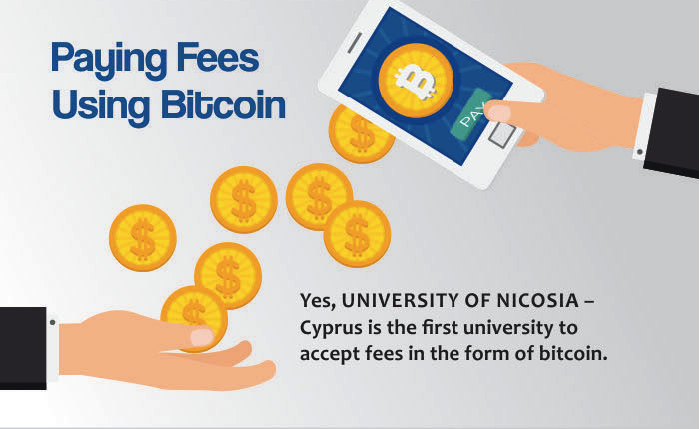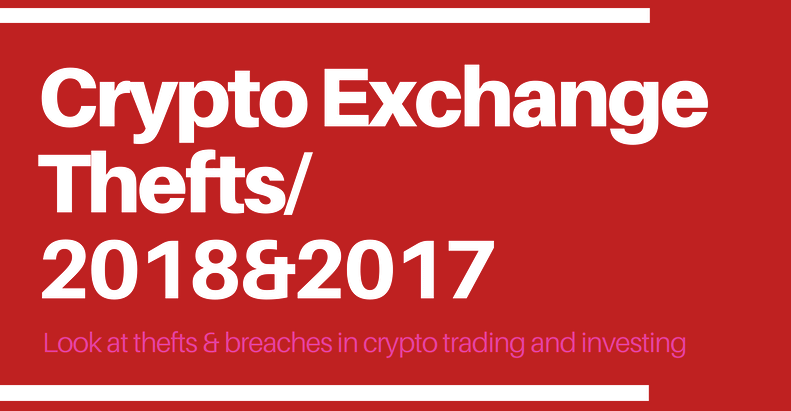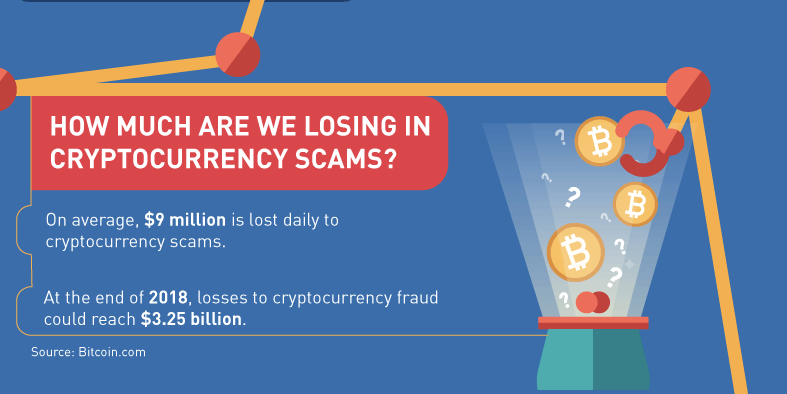 Christophe Spoerry is an investor and entrepreneur who has been silently involved in some serious blockchain technology experimentation for a few years now. In the B2B fintech and insurtech circles, he is mostly known for his work at Euler Hermes as the co-founded of an initiative to reinvent trade finance with technology and data.
Christophe Spoerry is an investor and entrepreneur who has been silently involved in some serious blockchain technology experimentation for a few years now. In the B2B fintech and insurtech circles, he is mostly known for his work at Euler Hermes as the co-founded of an initiative to reinvent trade finance with technology and data.
His newly launched tradetech venture builder is called Alpine Style, referring to mountaineering in a self-sufficient manner - the way which is faster and more efficient than expeditions.
Alpine Style’s first venture Marjory launched in September 2018 in partnership with Credendo. Marjory is an innovative orchestrator of trade services for B2B platforms and marketplaces, it connects with the most suitable partners in each B2B service categories like KYC/AML, trade finance or commercial insurance.
From the Alpine Style’s monthly newsletter it is clear how blockchain-heavy some of their ideas are. We took the opportunity to ask Christophe a few questions about the state of blockchain technology developments in trade finance as they appear to happen completely behind closed doors.
The blockchain tech industry may look like a wild jungle, but it is possible to navigate through it safely by taking baby steps.
The popular belief in the crypto community says that blockchain as a distributed database is too expensive and doesn’t pay off. And yet there are marketplaces like Corda by r3 that list solutions just like that. Is the common belief false? How can blockchains as distributed databases provide better solutions than traditional systems?
There are different ways to define efficiency, cost is only one of them. Indeed, in most of the cases running distributed databases costs more than having a centralized one. But focusing only on operating costs completely ignores other efficiency factors that need to be taken into account. Certain blockchains may solve certain problems better than centralized approaches, that is what shifts the importance of operational costs.
Blockchain marketplaces typically offer the kind of solutions where there is far more at stake than just data storage. Particularly when speaking of data storage in trade finance and credit insurance, currently most of the industry’s data is in fact decentralized.
The reason is the information is stored privately by each enterprise behind corporate firewalls in resource planning systems, in customer-relationship management software, in accounting systems and so on. Centralizing this data for industry-wide use would require a huge effort in convincing corporates that everything will be fine.
It is comparatively easier to set up a marketplace where the owners of data can simply meet the buyers of data. The two parties can then transact on a bilateral basis outside of the marketplace. Making sure that the transacted data cannot be tampered with or that the right payment goes through are the aspects where blockchain can typically be leveraged.
This is for example what Eqitii is building - a secure blockchain-based data marketplace that motivates data owners and buyers to cooperate. At Alpine Style, we are helping some of the players in trade finance and credit insurance to buy and sell data on Eqitii.
It seems experimenting with blockchain solutions for trade finance and credit insurance is already well under way, even though we don’t hear much about it outside of the industry.
The first initiatives to develop blockchain solutions for trade finance and credit insurance date back from 2014, first real transactions started happening in 2015. That was long before the hype that we are currently going through. What we see now is just the communication outbidding related to the hype. In some cases it is disconnected from reality.
In fact, there is no justification for communication about blockchain in our industry at all: Customers are not interested in blockchain, they are interested in solutions.
Blockchain is a technology and a philosophy of business model architecture. We can rebuild parts or all of our processes and services upon blockchain, but our customers don’t need to know anything about that. They should simply be able to use blockchain solutions as they need.
But what is the stage of these experiments with blockchain technology? Are the applications in trade finance still just conceptual and any production expectations far-fetched?
Blockchain for trade finance is not an abstract problem disconnected from the current state of the industry. There are ways to leverage blockchain in trade finance or credit insurance to improve customer satisfaction. Additionally, from the point of view of trade finance providers, blockchain applications can extend the reach of our services both to new market segments and also deeper in supply chains.
In these areas of blockchain technology implementations for trade finance, many of the applications are production-ready or not far from it. It’s actually at the stage where the responsible executives who jumped on the bandwagon early are already reaping first benefits.
This being said, the majority of our industry still sleeps on blockchain. From past technology breakthroughs like cloud technology, big data or APIs we know how challenging this type of transformations can be for trade finance.
In your newsletter you mentioned federating access to data for development of financial models. Does that mean fragmentation of data is a pain point in the industry? Is blockchain investigated for solutions?
Majority of the data in trade finance is fragmented by design. Most of small business data is held privately, such as the information about their commercial relationships, when each transaction should be paid and when it actually gets paid - none this data is freely available and therefore it is not part of any current financial model.
What it means is the data used for most models in trade finance is not representative of the credit risk of small corporates. That is one of the main explanations of the credit crunch experienced by small and medium-sized enterprises.
The challenge that blockchain can help with is to make this information accessible. Then we can either assemble it to train a new generation of credit risk models, or to design federated models that can learn on the fragmented data.
As seen on what Eqitii is doing, blockchain does not address these problems with data access directly. But it offers strong technological framework that provides motivation for businesses to start working on solutions. There are now completely new incentives for corporates to sell their data and completely new incentives for model builders to design the best possible models.
Where is the focus of the trade finance these days, is it more about experimenting with blockchain technology or also in providing services to blockchain companies in other industries?
In a balanced blockchain strategy the focus should be directed on both those aspects plus on leveraging blockchain technology internally.
A balanced trade finance provider can leverage blockchain technology for its own use and in addition to that work on applications that aim at the industry as a whole. That can be done by joining a trade finance consortium, an alliance of companies that works to solve some particular industry-wide issues. The same trade finance provider can meanwhile also address the needs of emerging market segments - that is, to provide services to other blockchain businesses.
The partners of Alpine Style focus on all of the three opportunities. For now though, the rest of the trade finance industry concentrates either on leveraging blockchain for themselves or on working within a consortium. Barely anyone is doing both at the same time.
As for providing services to blockchain-powered businesses, trade finance is still mostly scared of that. But that effectively makes blockchain technology an uncontested market space. Right now, blockchain businesses are a blue ocean for the trade finance providers, the credit insurers and the brokers who dare to address their needs.
It may look like a wild jungle, but it is possible to navigate through it safely by taking baby steps. We can for example provide the responsibility for debt obligations to crypto-backed lending platforms, we have quite reliable ways to compare the cryptocurrency lending market with similar market segments that we know better.
Another good stepping stone is issuing parametric solutions based on smart contracts. In insurance, parametric contract does not compensate the pure loss, it instead makes a payment when the triggering event occurs. The typical use of this system is to handle a high-intensity event that is not likely to happen but when it does happen, it will most typically incur a loss. In this use case, parametric insurance reduces transaction costs because it lessens the need for a detailed loss assessment. Starting to leverage smart contracts within this type of solution is a very reasonable step.
At last the obvious question: What particular blockchains do you target? I assume it will be Ethereum but it is not the only dApp platform available these days anymore.
We try to keep an eye on most blockchains. So far no existing blockchain addresses all of the use cases that are important for us.
Ethereum is a great blockchain, it is also a very interesting ecosystem of innovators. But certain pain points of our industry depend on simple payment processing and can be fixed well enough with 1st generation blockchains like Bitcoin.
Personally, I am very excited about EOS, even though it compromises on immutability and decentralization. And Eqitii too, for its potential to fix the data gap in trade finance.
More & Better:
Email alerts (2-3 a week)
- Opinions, Analyses & Interviews
- Industry News Releases
- Blockchain Tech Intelligence
Data is beautiful
Blockchain Technology in Mobile App Market: State of the Industry 2020
Blockchain is currently at the top among the new trending technologies that came up in recent years. It is a remarkable innovation for our ever more digitalised world. Blockchain is mostly known as decentralized network,...
New Horizons in Fintech: Payments, Big Data and Partnerships [Infographic]
The global fintech market saw a period of consolidation in 2018, which is exactly what we saw also in terms of price evaluation of crypto assets. In spite of the “crypto winter”, which is apparently...
Brand development in forex and crypto: Most expensive domain names [Infographic]
Crypto infographics - Most expensive domain names in forex and crypto. Targeted brand development in forex and crypto with domain names.
Top 8 Women in Blockchain Tech [Infographic]
When it comes to women in crypto, the pre-2016 OG heads will probably come up with names like Alena Vranova and Blythe Masters. Alena Vranova is the former CEO of Satoshi Labs, the company that...
Infographic: Blockchain Technology, Ledgers, Blocks and the Role of Price
Blockchain technology 101: What is blockchain, what types of blockchains exist and what role does the cryptocurrency price play.
Infographic: The Good And The Bad Of ICOs
Infographic: The good and bad of ICOs - Which token sales raised the most money in 2018?
The Business of Esports: All The Numbers [Infographic]
Esports is a rapidly emerging category as a real sport. It’s even beginning to compete with traditional sports.
Shocking Facts About Cryptocurrency Heists [Infographic]
If there is one question in the history of Bitcoin that cannot be answered with anything more than an estimate, it is the problem of how much of Bitcoin’s supply is actually ever available on...
Comparing Forex Market with Crypto Markets [Infographic]
One of the few metrics that cryptocurrency markets have in common with the forex markets in 2018 is the high percentage of total trades being located on few most popular markets.
East vs. West: Which One Sides More With Blockchain?
Digital cash schemes were the holy grail of the late 90s, but since the bitcoin blockchain was invented, suddenly nobody in the West cares.
Blockchain Consortium in Trade Finance: 6 Notable Networks [Infographic]
The success of trade finance blockchain implementations depends on how widely they are adopted. That's why we have seen businesses form consortia based on similar interests.
Real-world companies that accept crypto payments [Infographic]
Infographic - Graphic map of businesses that let customers pay in bitcoin.
Infographic: Blockchain Hacks & Crypto Trading Platform heists 2018 vs 2017
Blockchain infographic comparing the biggest crypto heists of 2018 and 2017. In 2017 the focus lied more on ICOs, smart contracts and wallet.
15 crypto kings that are making history with their engagement in the field of cryptocurrencies
Coining The Bucks With Cryptocurrencies Have you ever wondered how much masters of the cryptocurrencies are worth? Like the guy who founded Ethereum, or the one who started Ripple, for example. The answer, in short,...
Industry News Releases
LocalCryptos, the non-custodial p2p platform, added a crypto-to-crypto exchange feature
LocalCryptos, formerly known as LocalEthereum, is currently the most popular non-custodial p2p market for cryptocurrencies....
Read >>- Montenegro to embrace blockchain technology in efforts to join the EU
- The Global Hackaton (April, Los Angeles) comes with free tickets to Crypto Invest Summit
- Etheremon celebrating #ChineseNewYear2019 with a series of bounties (Ends 8:00 AM UTC on Feb 11th)
- Crypto Marble dApp Game: Monopoly on Blockchain
- The dApp gaming platform VX Network launched the official VX Wallet in Apple App Store and Google Play
- Etheremon's first Chinese New Year Campaign: Chance to recall two rare mons
Comments
Also by Diana
In what ways might cryptocurrencies soon get more accepted in the mainstream?
Released on August 10, 2022 04:06:28 PM by Diana Read >>



![New Horizons in Fintech: Payments, Big Data and Partnerships [Infographic]](http://images.ctfassets.net/xwo28v1qbyr0/68XlkJIBuzcl5dyeDgIJ9m/bb7ee7ff0f255d3841186d638be798a1/android-android-phone-apps-47261.jpg)
![Brand development in forex and crypto: Most expensive domain names [Infographic]](http://images.ctfassets.net/xwo28v1qbyr0/5rT40HsDIWEUg0iWc8G2AA/084d085e8f7f31da24940b66ea356328/photo-1516321497487-e288fb19713f.jpeg)
![Top 8 Women in Blockchain Tech [Infographic]](http://images.ctfassets.net/xwo28v1qbyr0/FL3j8Qh2guG0wUacsS8S4/b1043ca8ea66dbff6c3decacf89c8888/women-blockchain.jpeg)


![The Business of Esports: All The Numbers [Infographic]](http://images.ctfassets.net/xwo28v1qbyr0/2ccUoChrlV9yZ4DAVU9zbj/fda01df3d8701b0186d3d4b599948707/esports-rise.png)
![Shocking Facts About Cryptocurrency Heists [Infographic]](http://images.ctfassets.net/xwo28v1qbyr0/7MiXmbuHd0NfWqKKd9hl7f/009c666e06e37af9a5a3ae8c6b6cc41e/martin-reisch-199362-unsplash.jpg)
![Comparing Forex Market with Crypto Markets [Infographic]](http://images.ctfassets.net/xwo28v1qbyr0/1MjGSV93CkQeuyusw4mGWy/31d8dc16c8a41703c1cd94273820431c/forex-vs-crypto.jpeg)

![Blockchain Consortium in Trade Finance: 6 Notable Networks [Infographic]](http://images.ctfassets.net/xwo28v1qbyr0/5LjWNG4sg0G8skosc6yCUu/09ee40b6faa5362e3843a4d4ac9d54b9/pexels-photo-373912.jpeg)
![Real-world companies that accept crypto payments [Infographic]](http://images.ctfassets.net/xwo28v1qbyr0/5uN67wErhSaaiQmok0UAKo/2d18d249a49a4e921f21e0e1703ab9b1/who-accepts-bitcoin__1_.png)


![How Blockchain Disrupts Business [Infographic]](http://images.ctfassets.net/xwo28v1qbyr0/5itC9tgscgEWqCAkUO0Q8S/c44f6a4af9bf880956aa43a6d8b03ef8/16-blockchain-disruptions__1_.png)



